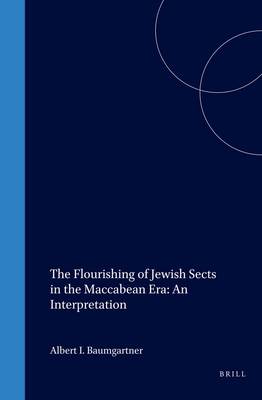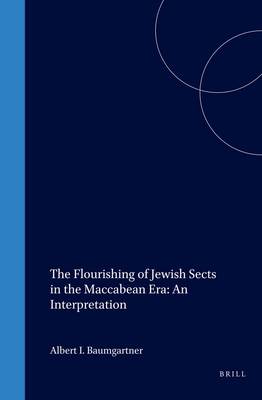
- Afhalen na 1 uur in een winkel met voorraad
- Gratis thuislevering in België vanaf € 30
- Ruim aanbod met 7 miljoen producten
- Afhalen na 1 uur in een winkel met voorraad
- Gratis thuislevering in België vanaf € 30
- Ruim aanbod met 7 miljoen producten
Zoeken
The Flourishing of Jewish Sects in the Maccabean Era: An Interpretation
Albert I Baumgartner
€ 296,45
+ 592 punten
Omschrijving
This volume asks why Jewish groups - Sadducees, Pharisees, Essenes and the Dead Sea Scroll sect - flourished during the Maccabean era. It argues that such a result is uncommon, requiring special explanation.
In the introduction, sectarianism is defined and its varieties in Second Temple Judaism assessed. Among the causes of the known results suggested are the encounter with an outside culture that seemed to be weakening the external national perimeter, the impact of expanded literacy, the move to the city from the farm, as well as eschatological hope aroused by Maccabean victory. In proposing these conclusions, full advantage is taken of recently published Qumran sources, such as 4QMMT. The objective is to discover the connection between context and consequence, which will explain why sectarianism was so prominent at that time.
In the introduction, sectarianism is defined and its varieties in Second Temple Judaism assessed. Among the causes of the known results suggested are the encounter with an outside culture that seemed to be weakening the external national perimeter, the impact of expanded literacy, the move to the city from the farm, as well as eschatological hope aroused by Maccabean victory. In proposing these conclusions, full advantage is taken of recently published Qumran sources, such as 4QMMT. The objective is to discover the connection between context and consequence, which will explain why sectarianism was so prominent at that time.
Specificaties
Betrokkenen
- Auteur(s):
- Uitgeverij:
Inhoud
- Aantal bladzijden:
- 256
- Taal:
- Engels
- Reeks:
- Reeksnummer:
- nr. 55
Eigenschappen
- Productcode (EAN):
- 9789004107519
- Verschijningsdatum:
- 1/09/1997
- Uitvoering:
- Hardcover
- Formaat:
- Genaaid
- Afmetingen:
- 166 mm x 245 mm
- Gewicht:
- 603 g

Alleen bij Standaard Boekhandel
+ 592 punten op je klantenkaart van Standaard Boekhandel
Beoordelingen
We publiceren alleen reviews die voldoen aan de voorwaarden voor reviews. Bekijk onze voorwaarden voor reviews.








